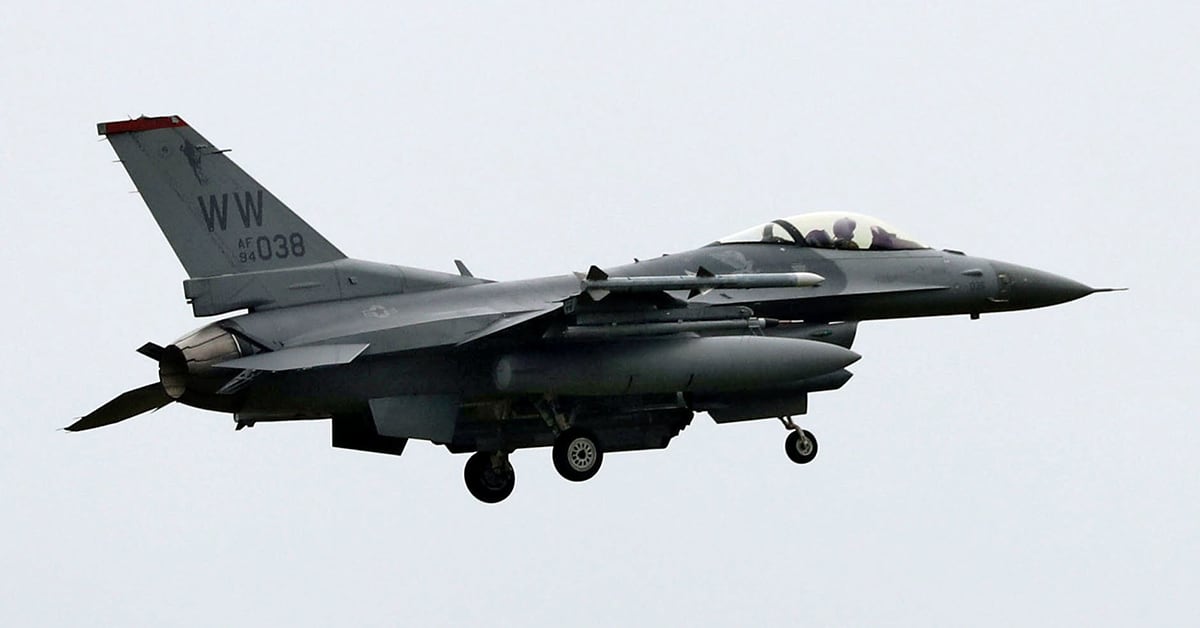An obsolete part that was mistakenly installed in an F-16CM Fighting Falcon at Misawa Air Base in Japan years ago broke apart in flight and caused an engine fire in February, an Air Force investigation found.
The accident investigation board, which Pacific Air Forces posted online Monday, concluded that “haphazard” maintenance procedures led to an out-of-date turbine frame forward fairing being installed in the F-16′s engine in 2012. That fairing — a ring made up of three connected titanium segments lining the forward outer section of the turbine frame — fractured during the F-16′s takeoff Feb. 20, blocked air needed to cool parts of the engine, and led to a fire that caused extensive damage.
The F-16 was assigned to the 35th Fighter Wing’s 13th Fighter Squadron. Its pilot quickly jettisoned his fuel tanks into a lake after his lead pilot warned him about the fire and safely landed. Nobody was injured, the report said, and the pilot did everything correctly. But the engine damage and loss of the fuel tanks cost the government more than $987,000, the report said.
However, the report details severe disorganization in the 35th Maintenance Squadron that led to the obsolete fairing being installed. The squadron has improved in recent years, the report said, but things got so bad in the 2012 to 2015 period that $322,000 in parts went unaccounted for. A search found that some parts had been installed on aircraft, without proper paperwork tracking what was done with those parts.
But some parts — including one that by itself was worth $3,000 — were misidentified and turned in for scrap, the report said. Other parts had mistakenly been sent to PACAF headquarters for repair or redistribution.
RELATED

“In 2015, the propulsion shop was in disarray, as there were no parts shelves, excess parts and boxes were left in the work area, there were old bins of material, and there was ‘stuff everywhere’ without much organization,” the report said. “It was ‘mix and match,’ with no standardization of where things went.”
The Air Force decided in August 2007 that all of those older fairings needed to be replaced with updated fairings, with improved material and design, within three years.
And in June 2010, the fairing was replaced on that fighter with the updated one. But during a structural life extension program, or SLEP, maintenance procedure in 2012, the new, improved fairing was taken out and replaced with an obsolete one — which the squadron shouldn’t have even been able to order, the report said. That obsolete fairing is no longer available for issue, the report said.
It is unclear from the report why the maintainers replaced the good fairing. But, the report said, “Witness testimony indicates that the work section was significantly disorganized during that period [and] the shop possessed substandard accountability and tracking of engine parts during extensive engine teardowns and rebuilds.”
Misawa’s 35th Fighter Wing is the Air Force’s leading “Wild Weasel” organization, specializing in the destruction of enemy air defenses such as surface-to-air missile systems.
An improperly assembled engine also led to the crash of another F-16C in April 2017. That F-16, which was from the Air National Guard’s 121st Fighter Squadron, 113th Wing at Andrews Air Force Base near Washington, was missing necessary parts that caused too much fuel to be sent to the engine, causing a fire and catastrophic engine failure, another investigation found. That pilot safely ejected and was not injured.
Stephen Losey is the air warfare reporter for Defense News. He previously covered leadership and personnel issues at Air Force Times, and the Pentagon, special operations and air warfare at Military.com. He has traveled to the Middle East to cover U.S. Air Force operations.





